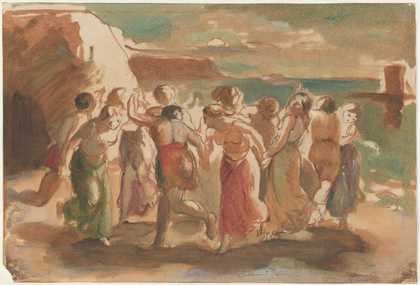Biography
Mary Pickersgill (born Mary Young; February 12, 1776 – October 4, 1857) was the maker of the Star-Spangled Banner hoisted over Fort McHenry during the Battle of Baltimore in the War of 1812. The daughter of another noted flag maker, Rebecca Young, Pickersgill learned her craft from her mother, and in 1813 she was commissioned by Major George Armistead to make a flag for Baltimore's Fort McHenry that was so large that the British would have no difficulty seeing it from a great distance. The flag was installed in August 1813 and, during the Battle of Baltimore a year later, Francis Scott Key could see the flag while negotiating a prisoner exchange aboard a British vessel and was inspired to pen the words that became the United States National Anthem in 1931.
Pickersgill, widowed at age 29, became successful enough in her flag-making business that in 1820 she was able to buy the house that she had been renting in Baltimore, and later she became active in addressing social issues, such as housing and employment for disadvantaged women. From 1828 to 1851, she was president of the Impartial Female Humane Society which had been founded in 1802 and incorporated in 1811, and helped impoverished families with school vouchers for children and employment for women. Under Pickersgill's leadership, this organization built a home for aged women and later added an Aged Men's Home which was built adjacent to it. These, more than a century later, evolved into the Pickersgill Retirement Community of Towson, Maryland which opened in 1959.
Pickersgill died in 1857 and was buried in the Loudon Park Cemetery in southwest Baltimore, where her daughter erected a monument for her, and where some civic-minded organizations later erected a bronze plaque. The house where Pickersgill lived for 50 years, at the northwest corner of Albemarle and East Pratt Streets in downtown Baltimore, became known as the Star-Spangled Banner Flag House in 1927. The house was saved through the efforts of many preservation-minded citizens who were motivated by the Centennial Celebrations of 1914.
This biography is from Wikipedia under an Attribution-ShareAlike Creative Commons License. Spotted a problem? Let us know.
Read full Wikipedia entry

